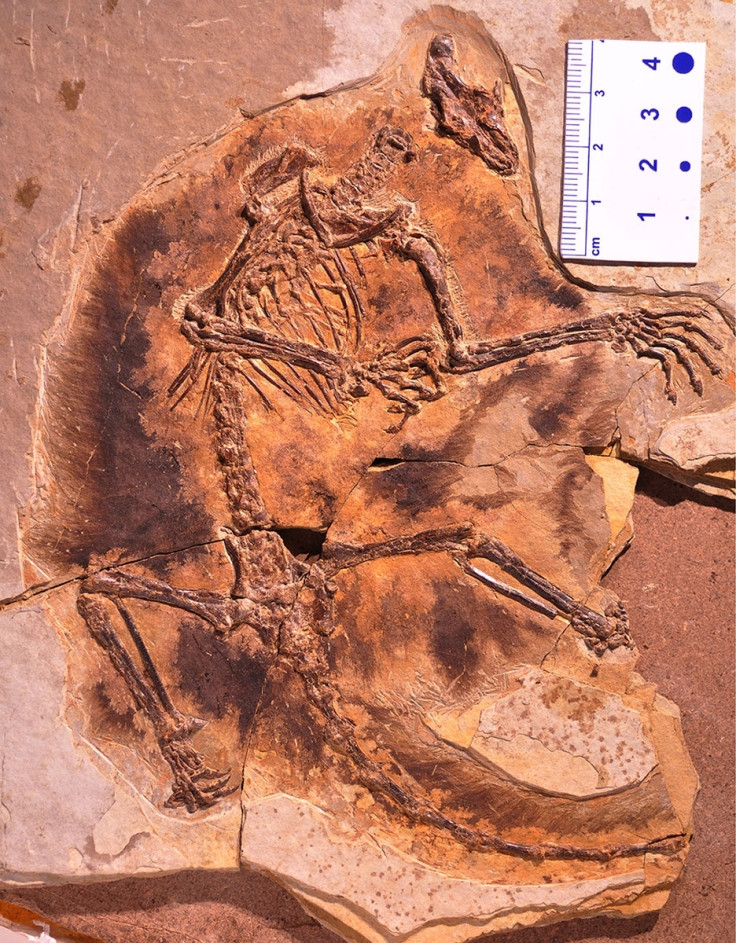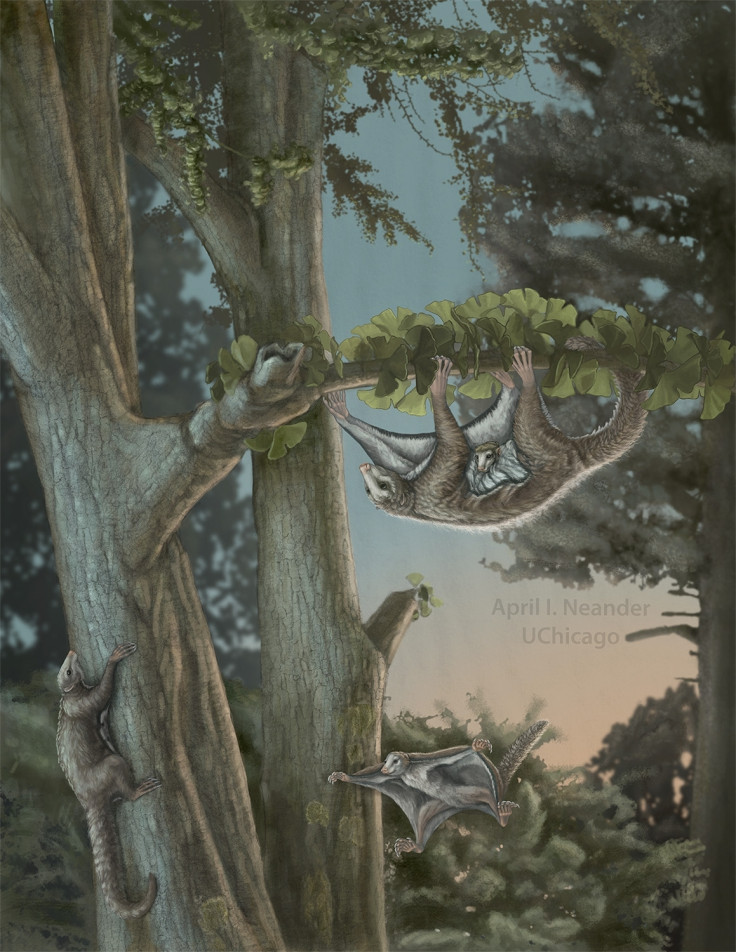160-million-year-old Jurassic fossils in China reveal that the earliest mammals could actually fly
They could glide between trees above the dinosaurs that roamed the ground.
Our earliest mammal ancestors could glide from tree to tree on wing-like membranes, two Jurassic fossils have revealed.
The fossils were discovered in the Tiaojishan Formation to the north-east of Beijing. Each has wing-like skin exquisitely preserved attached to their arms and legs, suggesting that flight evolved in mammals 100 million years earlier than it did among the modern flying animals, such as bats and flying squirrels.
"It's amazing that the aerial adaptions occurred so early in the history of mammals," said David Grossnickle of the University of Chicago, author of a study in the journal Nature on the findings, in a statement. "Not only did these fossils show exquisite fossilisation of gliding membranes, their limb, hand and foot proportion also suggests a new gliding locomotion and behaviour."
These limbs were particularly long and delicate, specialised for being lightweight but strong enough to support the wing membranes. Both of the mammals – named Maiopatagium and Vilevolodon – belonged to the long-extinct haramiyidans group.
"These Jurassic mammals are truly 'the first in glide'," said Zhe-Xi Luo of the University of Chicago, also a study author. "In a way, they got the first wings among all mammals."
The diet and way of feeding of these early flying mammals was specialised to make use of ferns and conifers, as they existed long before flowers first evolved in the Cretaceous. Their specialised feeding adaptations are detailed in another study in the same issue of the journal.
The discovery of such unexpected diversity among early mammals could turn interpretations of the era of the dinosaurs on its head. Perhaps these giant carnivores and herbivores were accompanied by a much more wide-ranging selection of mammals than previously realised.

"These new fossil gliders are the first winged mammals, and they demonstrate that early mammals did indeed have a wide range of ecological diversity, which means dinosaurs likely did not dominate the Mesozoic landscape as much as previously thought," said Luo.
"With every new mammal fossil from the age of dinosaurs, we continue to be surprised by how diverse mammalian forerunners were in both feeding and locomotor adaptations. The groundwork for mammals' successful diversification today appears to have been laid long ago."

© Copyright IBTimes 2024. All rights reserved.






